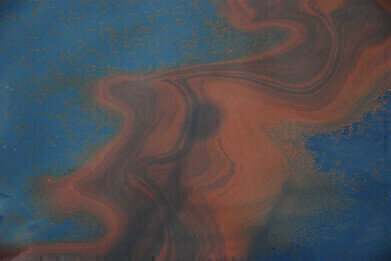GC, MDGC
What Happens to Oil after the Spill? Chromatography Steps In
Jan 09 2015
In April 2010, there was a wellhead blowout on the Deepwater Horizon oil rig in the Gulf of Mexico, close to the Mississippi River Delta. The subsequent explosion and sinking of the rig cost eleven lives. The well was officially sealed in September and it is estimated that 210 million US gallons of crude oil was released, making it the largest accidental oil spill in the history of the petroleum industry.
But what happens to all that oil after the spill? It is estimated that almost two million US gallons of dispersant was used to try and minimise the shoreline impact. It was also the first time that dispersants were injected into the oil stream leaving the wellhead — an experimental approach that is still be evaluated. But the oil still reached the coast of the USA. Over two million kilograms of oily material was removed from the beaches of Louisiana alone in 2013. But when the oil hits the beaches — how does it behave and degrade?
A team of Swiss and US scientists have used chromatography to try and find out.
Weathered Oil
The oil washed up on the shore degrades naturally due to exposure to the elements. But the dominant components in weathered oil have been difficult to characterize and analyse with normal gas chromatography. These components are known as unresolved complex mixtures (UCMs) and are made up mainly of saturated hydrocarbons. The team set out to learn more about UCMs and to attempt to quantify the rate and extent of their biodegradation in the environments they are found in.
They used a process known as GC x GC to separate and identify the UCMs — enabling the team to show how these persistent compounds degrade over time. The research published in Environmental Science and Technology and shows how chromatography can help us to understand the world around us.
Two-Dimensional Gas Chromatography — GC x GC
GC x GC was developed in the 1990s and is used to separate complex materials when standard GC offers insufficient separation. It is used in the oil and gas industries to determine types of hydrocarbons and isomers present in complex mixtures. GC x GC uses two columns separated by a modulator.
One of the features of GC x GC is that the focusing of the bands during modulation results in increased sensitivity. The increased sensitivity means narrower peaks with better resolution — this needs detectors with increased sensitivity to be able to separate the bands — making the technique ideal for separating complex mixes found in weathered oil.
The results obtained by the team show that although the different fractions of oil (the number of carbon atoms in the chains of the oil molecules) all degraded they did so at different rates — allowing the team to develop an index to characterize the biodegradation of weathered oil samples.
A discussion on the advantages of multidimensional GC analysis in the petroleum industry is discussed in this article: Determination of Biomarkers in Petroleum by Multidimensional Gas Chromatography: Fundamentals, Applications, and Future Perspectives.
Image Source: Deepwater Horizon Oil Spill
Digital Edition
Chromatography Today - Buyers' Guide 2022
October 2023
In This Edition Modern & Practical Applications - Accelerating ADC Development with Mass Spectrometry - Implementing High-Resolution Ion Mobility into Peptide Mapping Workflows Chromatogr...
View all digital editions
Events
Apr 28 2024 Montreal, Quebec, Canada
May 05 2024 Seville, Spain
May 15 2024 Birmingham, UK
May 19 2024 Brno, Czech Republic
May 21 2024 Lagos, Nigeria














